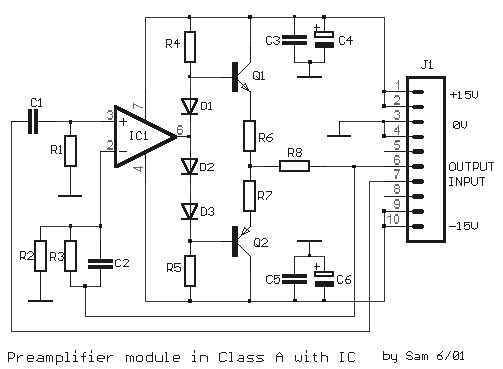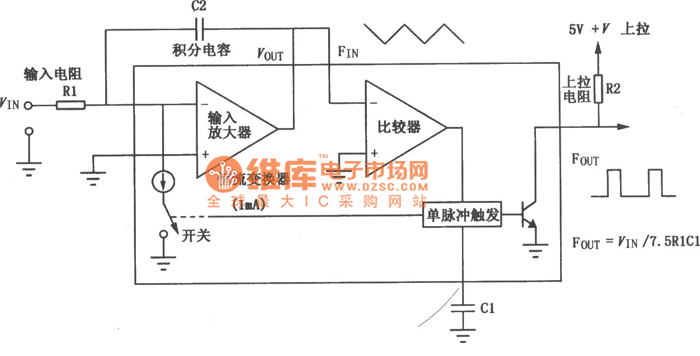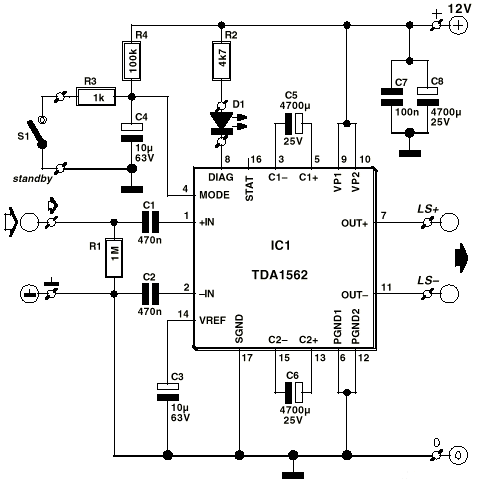
Class A Modular Preamplifier with Single Integrated Circuit

The circuit is based on a single operational amplifier integrated circuit designed to produce a modular preamplifier that operates in Class A configuration.
The modular preamplifier circuit utilizes a single operational amplifier (op-amp) integrated circuit, which serves as the primary amplification element. In a Class A configuration, the op-amp operates with a continuous current flow through the output stage, ensuring that the amplifier is always active and providing linear amplification of the input signal. This configuration is known for its high fidelity and low distortion characteristics, making it suitable for audio applications and other scenarios where signal integrity is paramount.
The circuit typically includes passive components such as resistors and capacitors to set the gain, filter unwanted frequencies, and stabilize the operation of the op-amp. Input and output coupling capacitors may be employed to block DC offsets while allowing the AC signal to pass through. The gain of the amplifier can be adjusted by changing the feedback resistor values, allowing for flexibility in the design based on the specific application requirements.
Power supply considerations are also crucial in the design of this preamplifier. A dual power supply configuration (positive and negative voltages) is often used to maximize the output swing and minimize distortion. Proper decoupling capacitors should be placed near the power supply pins of the op-amp to ensure stable operation and reduce noise.
Overall, this modular preamplifier circuit is a versatile solution for enhancing weak audio signals, providing a clean and amplified output suitable for further processing or direct driving of loads.The circuit was based on a single operational amplifier integrated circuit that is made to produce a modular preamplifier which functions in the Class A o.. 🔗 External reference
The modular preamplifier circuit utilizes a single operational amplifier (op-amp) integrated circuit, which serves as the primary amplification element. In a Class A configuration, the op-amp operates with a continuous current flow through the output stage, ensuring that the amplifier is always active and providing linear amplification of the input signal. This configuration is known for its high fidelity and low distortion characteristics, making it suitable for audio applications and other scenarios where signal integrity is paramount.
The circuit typically includes passive components such as resistors and capacitors to set the gain, filter unwanted frequencies, and stabilize the operation of the op-amp. Input and output coupling capacitors may be employed to block DC offsets while allowing the AC signal to pass through. The gain of the amplifier can be adjusted by changing the feedback resistor values, allowing for flexibility in the design based on the specific application requirements.
Power supply considerations are also crucial in the design of this preamplifier. A dual power supply configuration (positive and negative voltages) is often used to maximize the output swing and minimize distortion. Proper decoupling capacitors should be placed near the power supply pins of the op-amp to ensure stable operation and reduce noise.
Overall, this modular preamplifier circuit is a versatile solution for enhancing weak audio signals, providing a clean and amplified output suitable for further processing or direct driving of loads.The circuit was based on a single operational amplifier integrated circuit that is made to produce a modular preamplifier which functions in the Class A o.. 🔗 External reference





